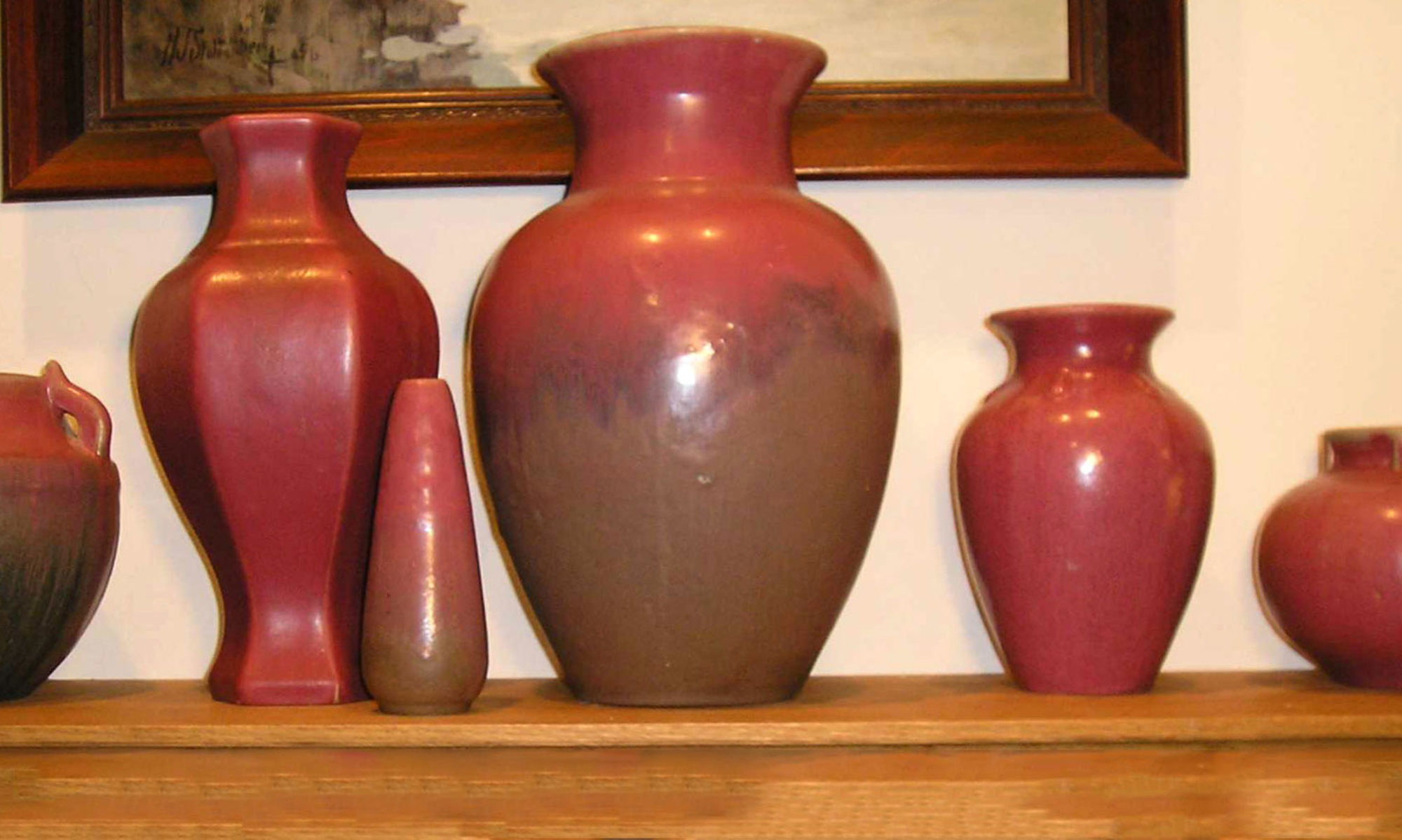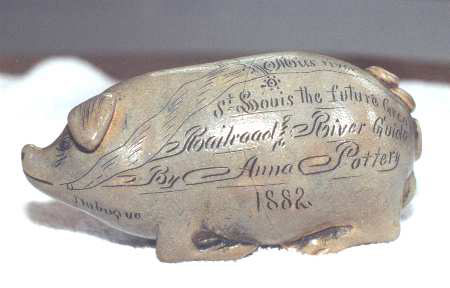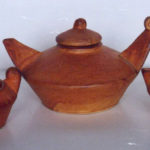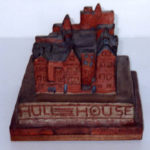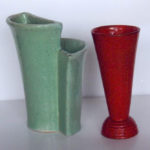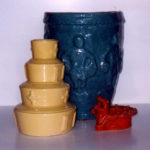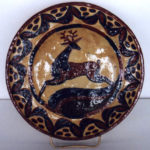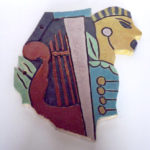Dundee Illinois
1871-Present
The Haeger Potteries company was begun by David H. Haeger in 1871. The firm that began as a brickyard in Dundee, Illinois continues to this day as one of the few remaining large-scale manufacturers of industrial artware.
Presentation from October 1996 by Nicol Knappen
The firm began producing artware in 1914, and the contributions of former Fulper employee Martin Stangl to its success is probably incalculable.
While Haeger produced a less expensive product than Fulper (by using a lighter clay body and high gloss, low-fire glazes), there is an undeniable similarity between the early products of the two firms.
Haeger pottery has not kept pace value-wise with the products of its former competitors (like Red Wing and Hull). This is somewhat undeserved. Haeger vases and figurals often have modeling and glaze quality of great invention and skill.
While the Art Deco designs of Royal Hickman have always attracted some attention, the pre-Hickman era Haeger pottery is particularly undervalued, especially the ware designed for the the Arts & Crafts market.
Books on Haeger Potteries
Collecting Royal Haeger by Lee Garmon and Doris Frizzell. The book is useful primarily for its reproduction of catalog pages.
Haeger Potteries Through the Years: A Price Guide by David Dilley. Published by L-W Books
Haeger Potteries Timeline
1871
Company founded by David H. Haeger
1900
Edmund H. Haeger assumes leadership of company
1911
Martin Stangl joins the Fulper Pottery as Superintendent of its Technical Division.
1914
Stangl Employeed by Haeger to develop artware
1914
Haeger produces first artware (Classic Greek Vase, Design #1)
1920
Stangl returns to Fulper Pottery as General Manager
1929
Martin Stangle buys out Fulper and produces Stangle Pottery. A Bronze Green glaze, similar if not identical to an early Haeger glaze, is among those featured.
1930’s
Royal Arden Hickman (1893-1969) begins RaArt Pottery in California.
1930’s
Hickman employed and sent to Europe by the J.H. Vennon Company (of NY) to design crystal produced in Sweden, Demark, Czechoslovkia and Italy
1938
Hickman employed by Haeger, becomes chief designer for Royal Haeger line.
1939
The Buckeye Pottery Building in Macomb, Illnois is purchased by the Haeger Company for the manufacture of floral artware.
1939
Royal Haeger Lamp Company established
1941
Hickman designs black panther figurine (in three sizes: 18″, 24″ & 26″) for Carson Pirie Scott in Chicago. Extremely popular, the panther design was copied by nearly 30 other potteries.
1944
Royal Hickman leaves Haeger Potteries.
1940’s
Hickman establishes Royal Hickman Industires, a lamp manufacturer in Chatanooga, TN. The company is sold to the Phil-Mar Lamp Company of Cleveland and renamed Ceramic Arts, Inc.
1947
Eric Olson becomes Haeger’s chief designer.
1950’s
Haeger employs Royal Hickman as a free-lance designer and consultant.
1954
Joseph F. Estes becomes president of Haeger.
1954
Elsa Ken Haeger designs Haeger’s Royal Garden Flower-ware lline (produced through 1963).
1971
Sascha Brastoff designs the Esplanade and Roman Bronze lines for Haeger.
1972
Eric Olson retires from Haeger
1979
Nicholas Haeger Estes becomes president of The Royal Haeger Lamp Company.
1979
Alexandra Haeger Estes becomes president of The Haeger Potteries of Dundee.
1984
C. Glenn Richardson becomes Haeger’s Director of Design.
Related Pages
1998 Show: Haeger-The Early And The Extraordinary
This was a special one-day exhibit sponsored by the Wisconsin Pottery Association at the annual show and sale, August 22, 1998
Includes an exhibit gallery.
Related Links
(these are external sites & will open another window)
The Haeger factory’s website, featuring their current catalog for their floral & art ware, and history.
http://www.haegerpotteries.com
A discussion group about Haeger Pottery:
http://groups.yahoo.com/group/haegerpotterycollectors/
